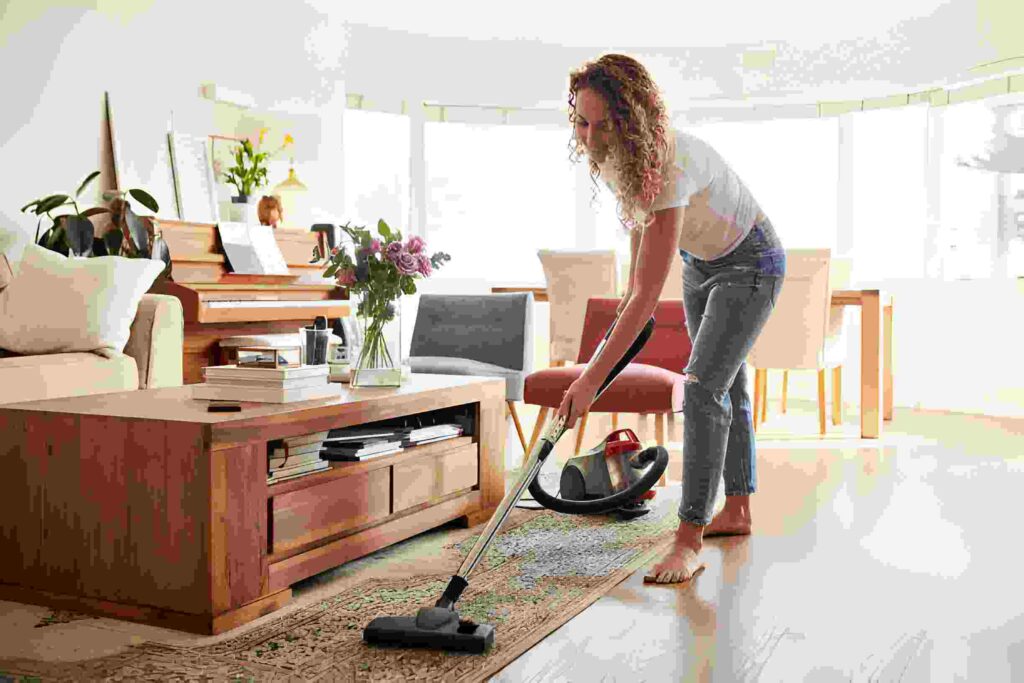
High-traffic areas in our homes bear the brunt of daily activities, from muddy shoes to spilled drinks and everything in between. As a result, these spaces demand special attention when it comes to cleaning. In this detailed guide, we’ll explore the ins and outs of cleaning high-traffic areas, providing you with simple yet effective strategies to keep these spaces not just clean, but also inviting and comfortable.
High-traffic areas are spots in your home that witness frequent movement. These spaces tend to accumulate dirt, dust, and grime more quickly than other areas. Regular cleaning not only maintains cleanliness but also extends the life of your flooring and furnishings. High-traffic areas accumulate common types of dirt, including dust, mud, and spills. Understanding the nature of the mess helps in choosing appropriate cleaning methods. Let’s dive into the world of household cleanliness and discover the secrets to maintaining the busiest parts of your home.
Benefits of Clean High-Traffic Areas
- Health and Hygiene: Regular cleaning helps eliminate allergens, preventing respiratory issues and promoting overall well-being.
- Longevity of Flooring: By removing dirt and debris promptly, you can prevent premature wear and tear on your carpets and flooring.
- Enhanced Aesthetics: A clean and well-maintained space instantly elevates the look and feel of your home.
Cleaning Strategies for Different Flooring Types
1. Carpets and Rugs:
Regular Vacuuming:
Vacuum high-traffic carpets and rugs at least twice a week to remove surface dirt and prevent it from settling deep into the fibers.
Spot Cleaning:
Tackle spills promptly using a mixture of mild detergent and water. Blot the stain instead of rubbing to avoid spreading.
2. Hardwood Floors:
Sweep Daily:
Use a soft-bristle broom or a dust mop to sweep away dirt and dust daily. This prevents scratches caused by abrasive particles.
Damp Mopping:
Periodically damp mop with a hardwood floor cleaner to remove stubborn grime. Avoid excessive water to prevent damage.
3. Tile and Grout:
Regular Sweeping:
Sweep tile floors regularly to remove loose dirt. Use a soft brush attachment on your vacuum for a thorough clean.
Grout Cleaning:
Clean grout lines with a mixture of baking soda and water or a specialized grout cleaner. Scrub gently with a brush.
4. Laminate Flooring:
Gentle Cleaning:
Laminate floors are sensitive to moisture, so use a damp microfiber mop or a laminate floor cleaner. Wipe up spills immediately.
Avoid Harsh Chemicals:
Steer clear of abrasive cleaners that can damage the protective layer of laminate flooring.
Furniture and Upholstery Care
1. Couches and Chairs:
Regular Vacuuming:
Vacuum upholstered furniture to remove dust and debris. Use an upholstery attachment for thorough cleaning.
Spot Treatment:
Treat stains on upholstery with a mixture of mild detergent and water. Blot gently with a clean cloth.
2. Coffee Tables and Surfaces:
Daily Wiping:
Wipe down coffee tables and other surfaces daily with a damp cloth to remove fingerprints and spills.
Deep Cleaning:
Periodically use a wood or surface-appropriate cleaner to maintain shine and cleanliness.
Entrance and Exit Points
1. Doormats and Rugs:
Double Doormats:
Place doormats both outside and inside entryways to capture dirt before it enters your home.
Regular Washing:
Clean doormats and rugs regularly, either by shaking them out or laundering, depending on the material.
2. Shoe Storage:
Establish a Shoe Station:
Set up a designated area for shoes near entryways. Consider shoe racks or baskets to keep the area organized.
Regular Shoe Check:
Encourage family members to check and clean their shoes before entering the house.
Regular Maintenance Tips
1. Establish a Cleaning Schedule:
Create a cleaning schedule that includes regular tasks for high-traffic areas. Consistent maintenance prevents the accumulation of dirt.
2. Invest in Quality Cleaning Tools:
Invest in quality brooms, mops, and vacuum cleaners designed for your specific flooring type. Effective tools make cleaning more efficient.
3. Rotate Furniture Placement:
Rotate furniture in high-traffic areas periodically to distribute wear and tear evenly across the space.
4. Use Rugs Strategically:
Place area rugs strategically in high-traffic zones to protect flooring and make cleaning more manageable. Rugs are easier to clean than entire floors.
Deep Cleaning and Professional Assistance
1. Annual Deep Clean:
Plan for an annual deep clean of high-traffic areas. This may involve professional carpet cleaning or a thorough floor waxing, depending on your flooring type.
2. Professional Carpet Cleaning:
Consider professional carpet cleaning services for a deep and effective clean. Professionals have the tools and expertise to tackle stubborn stains.
Green and Natural Cleaning Alternatives
1. Homemade Cleaners:
Create a natural cleaning solution using baking soda and vinegar for floors. This is safe, effective, and eco-friendly.
2. Essential Oils:
Add a few drops of essential oils, such as tea tree or lavender, to your cleaning solutions for a pleasant fragrance and added cleaning power.
Conclusion
In conclusion, maintaining cleanliness in high-traffic areas is a key aspect of home care that contributes to the overall comfort and well-being of your living space. By understanding the specific cleaning needs of different surfaces and implementing a regular cleaning routine, you can ensure that these bustling zones remain inviting and in top condition.
From daily tasks to DIY cleaning solutions and professional options, this guide provides a comprehensive approach to cleaning high-traffic areas. With strategic cleaning practices, you can preserve the beauty of your floors and surfaces, creating a home environment that is not only aesthetically pleasing but also conducive to a healthy and happy lifestyle. So, roll up your sleeves, embrace these simple yet effective tips, and elevate the cleanliness of the busiest areas in your home.







